
The Career Scholarship Account (CSA) is helping Indiana high school students get real-world experience and job-ready skills, without the stress of extra costs. Funded by the state, it covers tuition, uniforms, and more, making it easier for teens to prepare for life after graduation. In this article you will learn about the key features, eligibility, and application details.
Key Takeaways
The Indiana Career Scholarship Account (CSA) program provides high school students with up to $15,000 in financial support for career preparation programs. It also emphasizes work-based learning experiences.
Success stories from over 2,000 CSA participants demonstrate the program’s effectiveness. It has helped about 82% of them to secure employment or further education within six months of graduation.
Challenges such as equitable access and transparency in funding distribution need to be addressed to ensure the CSA program effectively serves all students and meets rising demand.
Understanding the Indiana Career Scholarship Account (CSA) Program
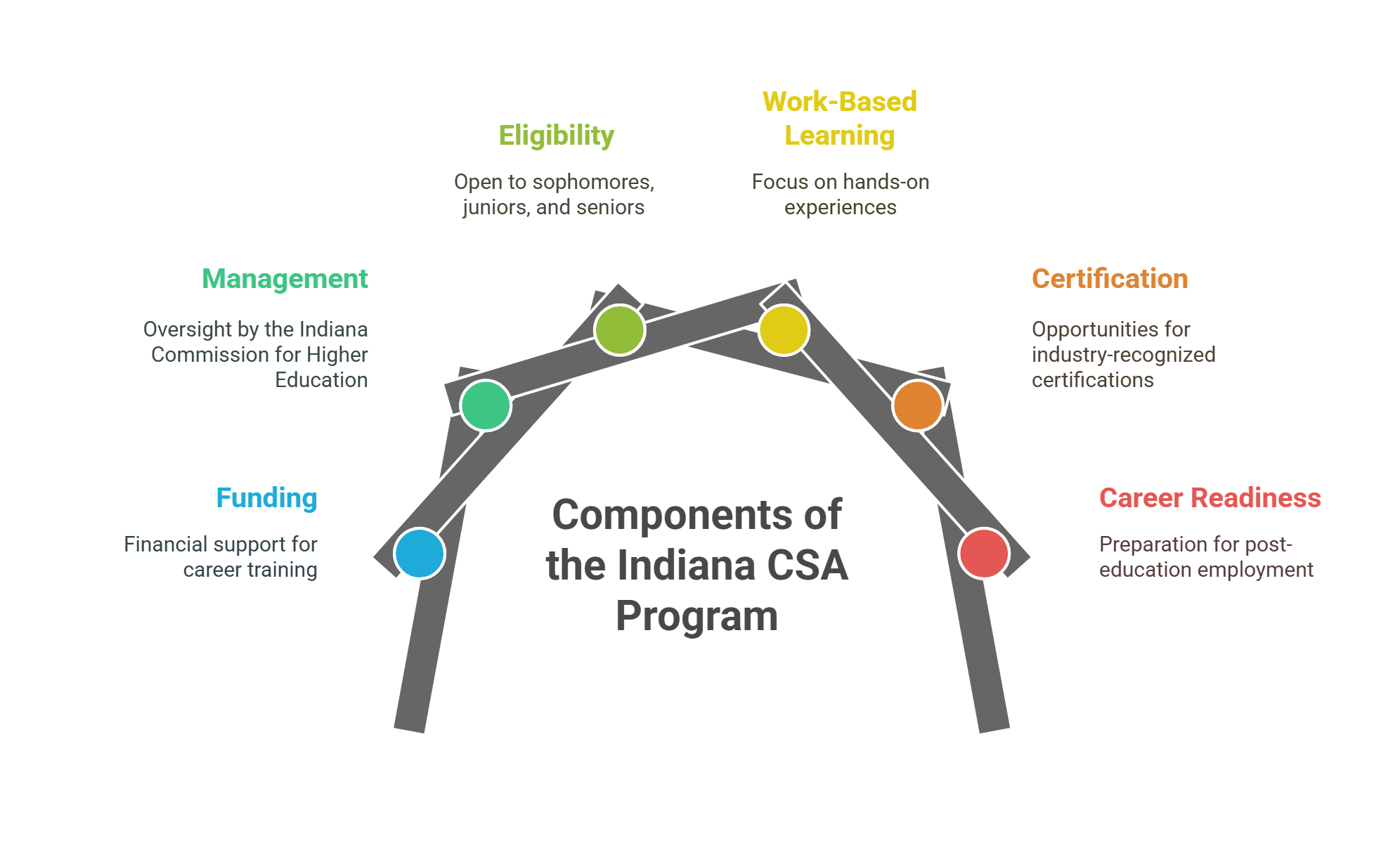
The CSA program is a bold effort by the state to help high schoolers get ahead in their careers. Created in 2023 by House Enrolled Act (HEA) 1002 (2023), the program offers funding for job training, hands-on learning, and certifications while students are still in school. This scholarship program is managed by the Indiana Commission for Higher Education to ensure it’s in alignment with state education goals. In addition to state sponsorship, the Indiana Treasurer is responsible for approving student expenses. They also manage the program’s financial operations.
This financial scheme is tailored for sophomores, juniors, and seniors in Indiana’s high schools. It supports their enrollment in career preparation programs that align with their future goals through dedicated career scholarship accounts. What makes CSA stand out isn’t just the funding. It’s the focus on work-based learning, which employers consistently say is one of the top things they look for in new hires.
According to Chris Lowery, Indiana Commissioner for Higher Education, “Career exploration through work-based learning programs is incredibly valuable to a student’s journey to determine their ideal pathway after high school. As students receive more flexibility to participate in these hands-on experiences, Indiana’s CSA Program will remove potential barriers and increase opportunities for students to discover possibilities for education and training beyond high school.”
With this program, a high school senior who’s not planning to attend college immediately, can learn skills in IT or aviation and walk straight into a job after graduation.
Overseen by the Indiana Department of Education, the CSA program
Helps to mitigate economic obstacles,
Facilitates access to meaningful work-based learning opportunities,
Is opened to eligible students from public, private, and charter schools,
Provides students with hands-on skills and industry-recognized certification, such as CNA,
Gives students crucial tools necessary for a thriving post-education vocation.
Ultimately, this education strategy aims at bolstering workforce readiness among pupils by linking them directly to authentic experiences which elevate both their potential employability and preparedness for upcoming careers.
For example, a junior interested in nursing can use the CSA to cover the cost of CNA certification while still in high school, saving time and money later.
The CSA program is designed to bridge the gap between education and employment in high-demand industries, ensuring students are equipped for the workforce.

Key Features of the CSA Program
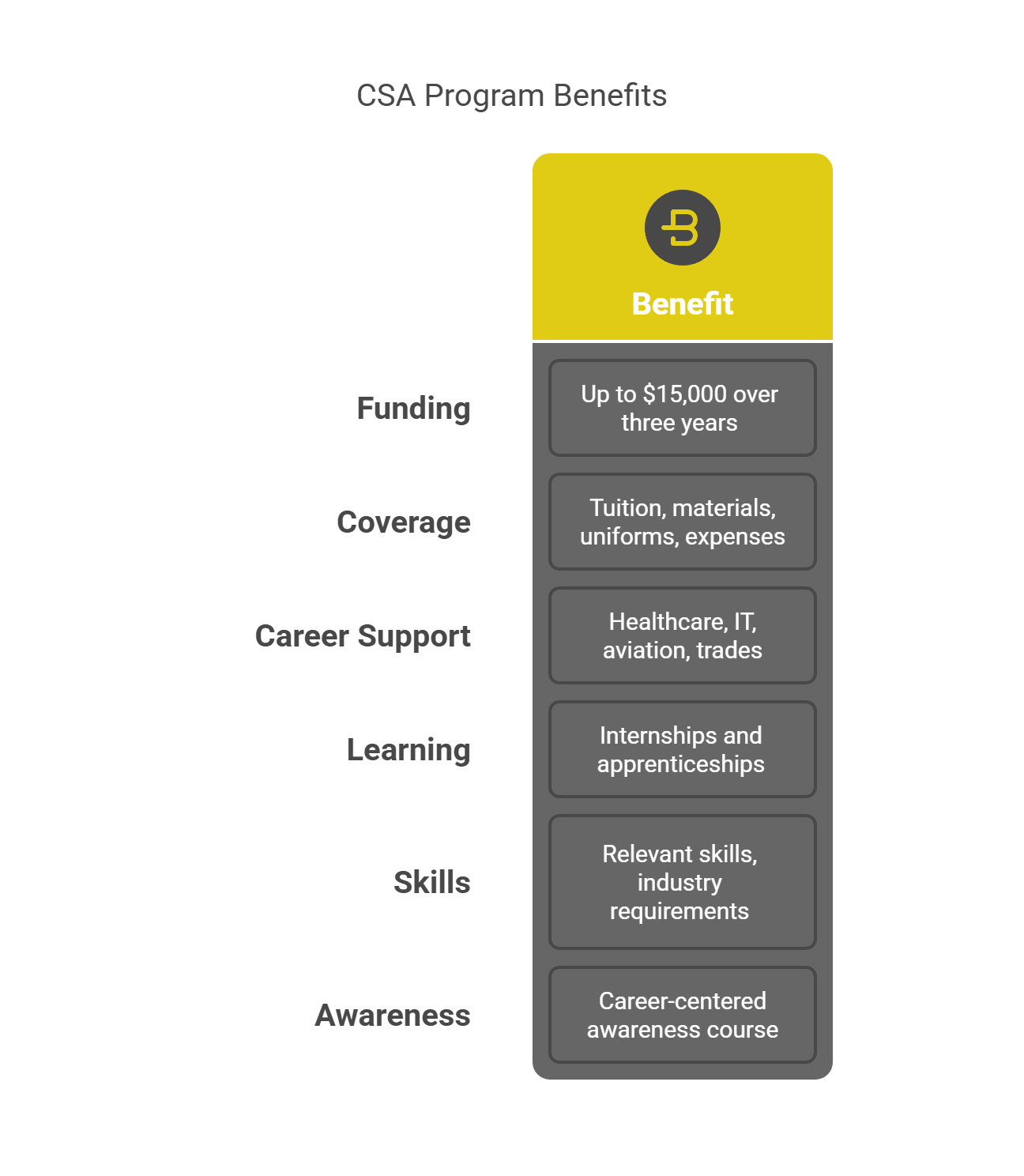
The CSA program stands out for its generous financial support, offering each participating student an annual scholarship of $5,000. CSA funds for certifications like CNA or aviation licenses directly support Technical Honors Diploma requirements, which mandate industry-recognized credentials for graduation. Here are some things that make it stand out:
Up to $15,000 in funding over three years for each student.
Covers tuition, course materials, uniforms, and other training-related expenses.
Supports a wide range of careers, from healthcare and IT to aviation and skilled trades.
Includes real-world learning, like internships and apprenticeships.
This program underpins apprenticeships and internships along with other forms of practical training for career development by:
Endowing students with relevant skills.
Deepening their grasp on industry requirements, which renders them more viable competitors in today’s job market.
In this array is an awareness course centered around careers designed by the program. This helps to bridge potential gaps encountered when entering into new realms of training opportunities, while thus preparing students even further. CSA participants gain technical skills and access to confidence-building mentorship opportunities that prepare them for leadership roles in high-demand industries.
Eligibility and Enrollment Process
The CSA program is designed for high school students keen on advancing their career prospects through targeted education and vocational training. Who can apply? If you’re a sophomore, junior, or senior in high school, you’re eligible. Here’s what to know:
Interested students must submit their applications by October 1st of the 2025-2026 academic year.
Students can participate l in the program by following a straightforward enrolling process.
Organizations such as Hope Training Academy are instrumental in guiding students toward professions that have a significant need for skilled workers.
You should sign up for the program as soon as possible to secure their spot before the deadline.
If you need more information or assistance with the application process, visit the Indiana Treasurer of State website.
In just one year, CSA enrollment grew from 200 to over 1,900 students, a 850% increase, showing how many students are seeing its value. Additionally, the program has recorded about 11% of apprentices retained employment with their company after program completion.
The CSA program connects students to career preparation programs and industry professionals. It also helps build connections between pupils and suitable programs that align with specific eligibility requirements.
Impact on Career Readiness and Workforce Development
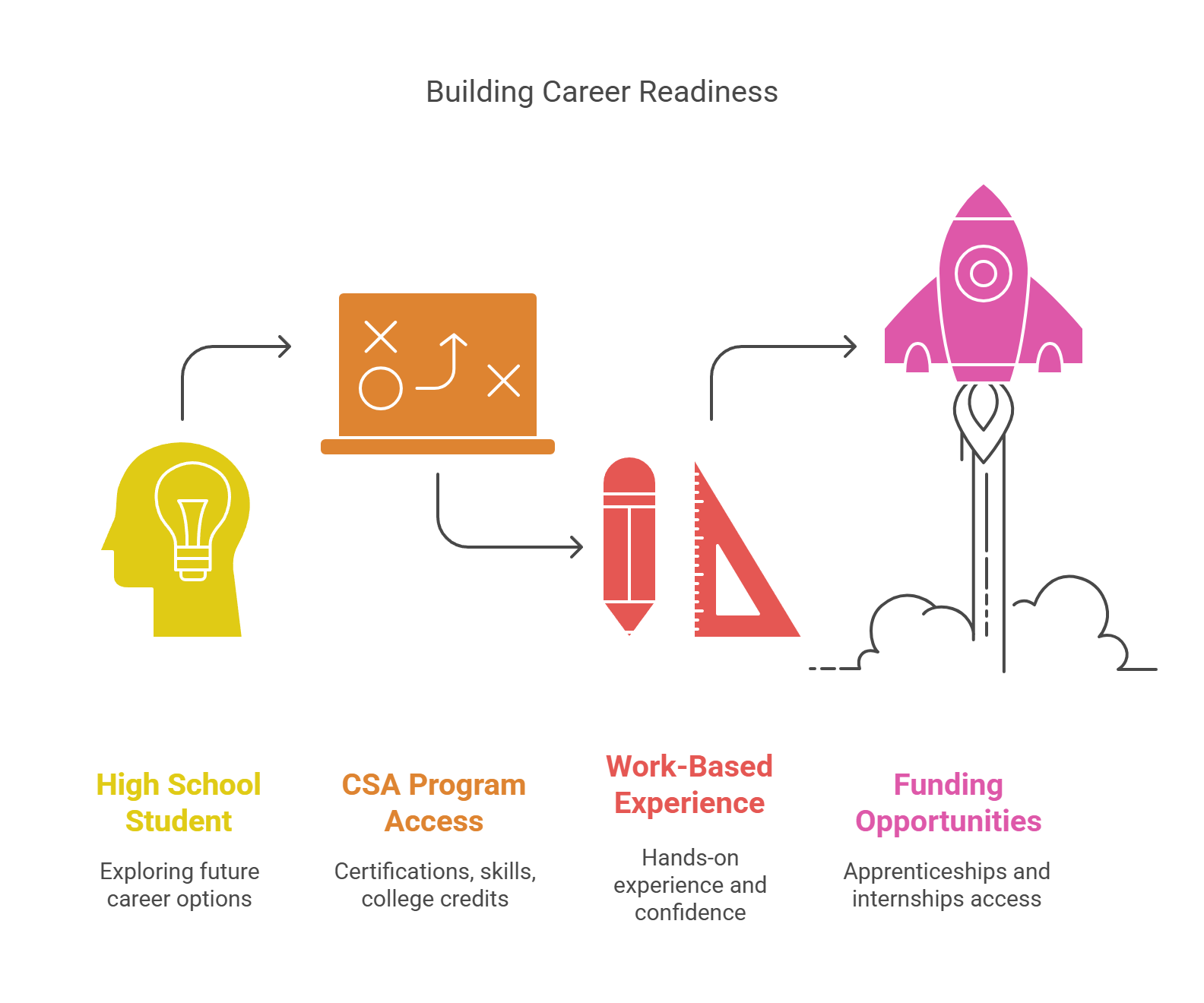
The CSA program offers much more than just financial assistance to college students. It builds futures and allows students to walk away with real skills, certifications, and even college credits that employers actually care about. Think of it like a career jumpstart where students are test-driving their future jobs while still in high school. The results? They gain both experience and confidence. CSA funding for internships and apprenticeships directly supports Indiana’s new diploma work-based learning requirements, which mandate hands-on experience for graduation.
The CSA program grants students access to certifications, practical skills, and possible college credits. It also helps in establishing an essential link between educational achievements and what employers are looking for. This connection is particularly important in today’s job market where hands-on experience and applicable skills are greatly sought after by employers. The CSA program’s focus on internships and certifications exemplifies effective workforce development strategies that bridge classroom learning with real-world job skills.
In the words of Dr. Katie Jenner, Indiana Secretary of Education, “In K-12 education, we have an incredible opportunity to help every student find their purpose, know their value and understand the possibilities for their life’s path. In order to maximize the four years of high school, we must work together to ensure more students have access to quality experiences that set them up for success, including high-quality work-based learning and educational attainment opportunities. Indiana’s CSA program is one way to remove barriers, such as transportation, and ensure more students have the opportunity to experience careers and earn a credential of value while still in high school.
More than 2,000 college participants have already reaped the benefits of engaging with the CSA program. While in the program, they acquired invaluable work-based experiences along with industry-specific credentials. The focus on integrating learning directly into the workplace guarantees:
Students emerge academically equipped.
Armed with tangible skillsets necessary to excel within their prospective professional fields.
Nurturing a new cadre of skilled professionals each passing week.
Moreover, it also facilitates funding options such as apprenticeships and internships within Indiana industries. This initiative effectively generates channels through which talent can flow into diverse sectors of employment.

Success Stories from CSA Participants
Participants in the CSA program have shared their success stories, illustrating how it has positively impacted their futures. Launched in 2023, the initiative has:
Over 2,000 student participants.
82% have managed to secure employment or continue into higher education within a mere six months post-graduation.
The high rate of favorable outcomes from this program reflects its effectiveness in providing students with essential capabilities and qualifications.
These individuals attribute much of their readiness for professional life to the real-world experiences they gained from internships and apprenticeships through CSA’s offerings.
“For example, in Milan High School, the CSA is helping students pursue their dreams. Meet Katherine Prifogle, a senior at the school who drives to Whitewater aviation three times a week.
The Indiana Career Scholarship Account, known as CSA, funds her trips to Ohio for aviation lessons. Prifogle hopes to eventually earn her pilot’s license.”
Such immersive learning opportunities have bolstered participant confidence and preparedness for career pursuits.
Engagement in the CSA program seems to significantly influence financial planning strategies related to education.
Industry Partnerships and Employer Benefits
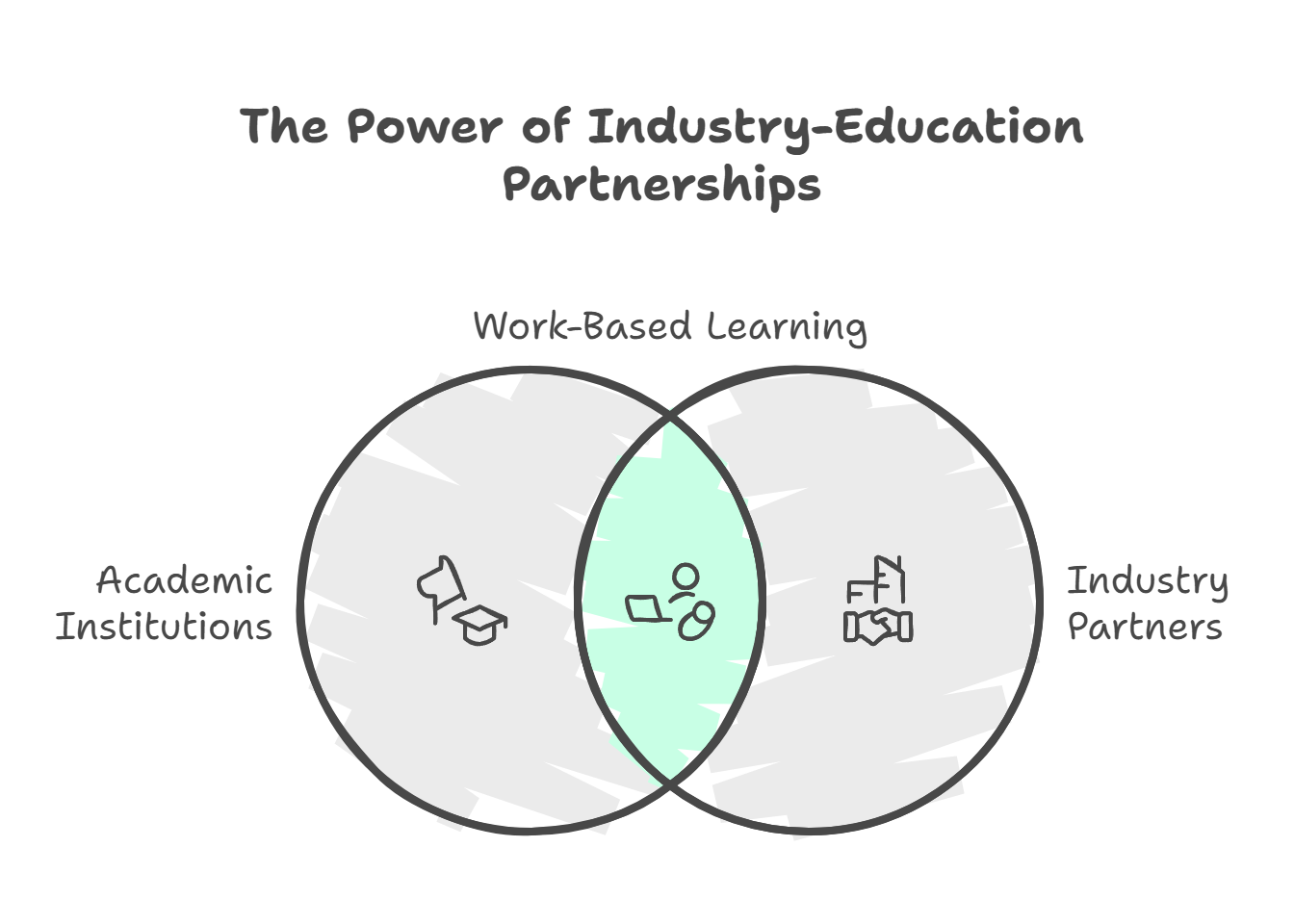
Partnerships with various industries is a fundamental part of the CSA program. This is because it provides substantial advantages for both students and employers. CSA internships empower student-driven career exploration, mirroring student-centered learning’s emphasis on autonomy and real-world application.
Here’s how:
Employers involved in this initiative gain access to a group of enthusiastic individuals ready to contribute their skills to the workforce.
Local companies also partner with the program to provide hands-on experience and mentorship. This experience helps students gain real-world insights and industry guidance.
In addition, the collaboration ensures that students acquire pertinent work experience that meets industry needs.
What’s the final result? Employers enjoy the infusion of new talent and fresh ideas.
In the CSA program, financial incentives are offered in the form of grants provided to schools when they achieve successful credential attainment. There are intermediaries appointed specifically for this purpose, and they play an essential role in connecting students with companies and industry professionals. Their actions help create an enabling pipeline that supports students to access practical work-based learning experiences. The CSA program’s emphasis on real-world experience aligns with virtual work-based learning internships that overcome geographic and scheduling barriers.
For example, some schools are using the CSA program to encourage students to join other programs like Startup Moxie, which is a partner in the program. Max Malloy, a senior at Elkhart High School in the Startup Moxie entrepreneurship program, says, “I like the aspect of Startup Moxie that we are given an environment that fosters us to explore the entrepreneurship side of things and goes against the grain of traditional school. It gives us a different path if we want to go out in our community and do something that is worthwhile.” Collaborations with businesses enable employer partnerships for workforce development, offering students real-world mentorship and industry exposure.
This partnership between academic institutions and businesses serve as a vital part in training students primed for employment readiness.
This synergy not only meets specific sector requirements across Indiana, but also equips learners with hands-on knowledge applicable in securing future employment.
Challenges and Criticisms of the CSA Program
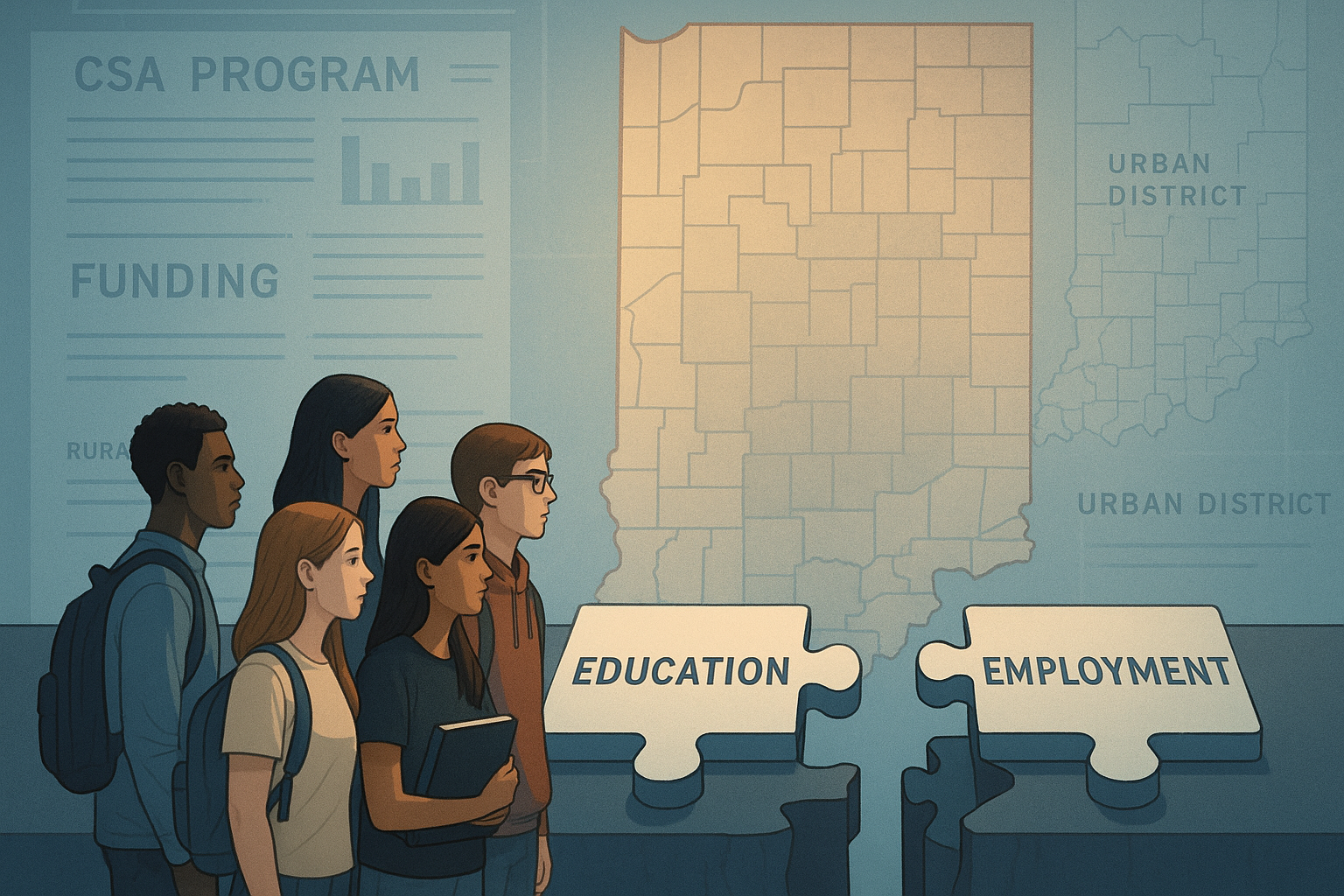
Despite the numerous advantages offered by the CSA program, it is not without its difficulties and detractors. Advocacy groups have urged for a rise in scholarship allocations to align with per-student public school spending. They argue that present funding levels may fall short of covering all essential costs.
There's a significant challenge is the gap between education and employment in high-demand industries. This program seeks to bridge by equipping students with practical skills and industry-recognized certifications.
However, there are persistent issues regarding fair participation in the program. These issues are especially in communities that are typically underserved.
Solving these matters will help in sustaining the success of this initiative over time. It also guarantees it can deliver equitable prospects for students’ career preparation and contribute to workforce growth.
Transparency Concerns and Fund Distribution
The CSA program has critical issues related to transparency. This spreads across how funds are distributed and the process for choosing employer partners.
The scarcity of available information regarding fund allocation and employer selection has sparked concerns. Many are unsure whether all parties have equitable opportunities.
For example, when the Arnolt Center for Investigative Journalism in collaboration with Chalkbeat tried to get information, they couldn't.
A representative from the Treasurer’s Office said the office was “unable to publish information requested externally.” They also said: “Under state law, information on student funding allocations and spending is provided to the Indiana Department of Education and the Commission for Higher Education.”
For a public program, the inability to access this information raises many questions.
Indiana University has also been involved in investigating and reporting on the program's transparency. It is crucial that this process be open and just to uphold the integrity and success of the program.
Tackling these challenges around transparency starts with a unified approach from everyone engaged in the CSA program. It’s important to offer transparent, readily accessible data pertaining to how funds are allocated. Additionally, details on partnerships with employers should also be made available and correct. This action creates trust and guarantees fair access for all participating students.
Equitable Access and Rural District Challenges
Providing fair access to the CSA program is a vital concern, especially for students located in rural districts. These regions typically have a limited number of sanctioned providers. This limitation forces students to commute to urban areas if they wish to join the program. Such travel demands can present considerable obstacles for rural students. It also hinders their capacity to experience the program completely.
To overcome these hurdles, the CSA administrator can:
Increase the roster of authorized providers within these rural districts. This guarantees that students there have equal chances.
Enhance accessibility and eliminate impediments. This will enable the CSA program to offer equitable career preparedness options for every student across Indiana.
Recent Developments and Future Outlook
Recent advancements in the CSA program aim to improve its impact and extend its reach across Indiana. State Treasurer Daniel Elliott highlighted a significant amendment that involves transferring control of the program from his office to the Indiana Department of Education. This move is anticipated to improve management and better serve students’ needs.
The program is also undergoing policy alterations, including phasing out income limits on private school vouchers by 2026, thus widening participation in the CSA initiative. In light of reaching full capacity by October 2024 with an overflow of 1,200 waitlisted students these modifications help meet increased interest. It also ensures expanded access for more students throughout Indiana.
Legislative Changes and Funding Increases
The Indiana General Assembly is currently considering a proposal to augment the scholarship funding for the CSA program from $10 million to $15 million within the 2025–2027 budget. This decision is made as a response to growing demand. It also aims at enabling support for a larger number of students and facilitating the expansion of the program’s scope.
Should this enhancement in scholarship funding be approved, it would offer greater financial aid opportunities for students. It will also help to pay for tuition and other educational expenses. Additionally, procuring extra funding will help the CSA program to diminish economic hurdles. Consequently, this will enhance access to specialized education for Indiana students via state-funded scholarships.
Future Plans and Expansion Goals
Looking forward, the CSA program is set to broaden its reach to regions that are currently underserved. The strategy involves increasing the number of go-between agencies to forge connections between students and potential employers. There's also plans to increase entry points into the next generation program within underprivileged counties. This initiative will ensure that all students have equal chances. They can take advantage of what the program has on offer, regardless of their geographic location.
Additionally, legislators have broadened permissible expenditures from CSA funds by incorporating transportation expenses related to job-training activities. This means participants can now allocate up to $1,000 for acquiring a driver’s license. They also have access to an additional amount up to $625 for various other transportation-related costs. Tackling these practical hurdles head-on will improve the career preparedness accessibilities among all student groups.

How to Maximize Your CSA Benefits
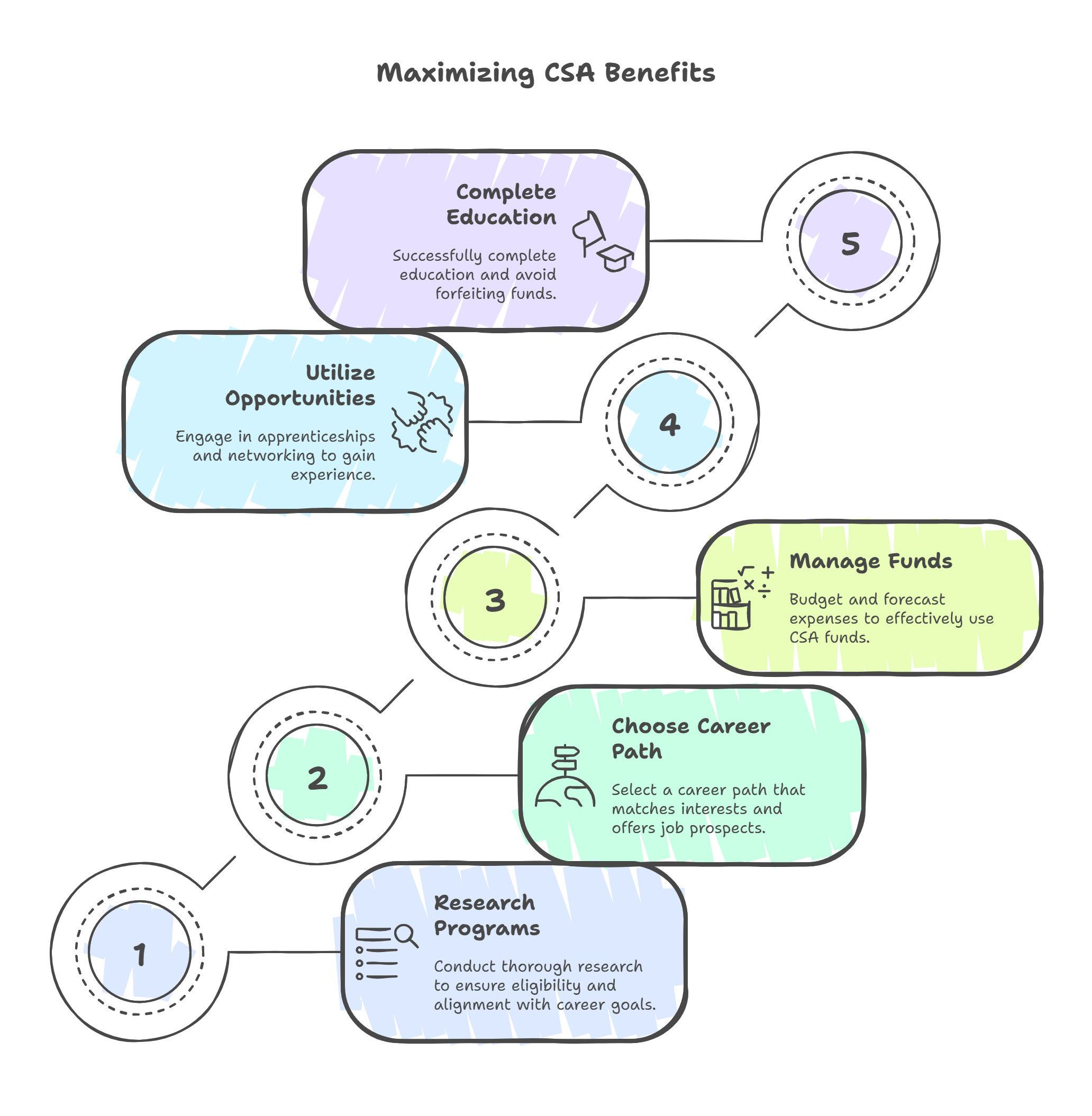
To fully enjoy the advantages of the CSA program, you must prepare carefully and make well-informed choices. The CSA program helps to provide you with training, certifications, and career opportunities in technology and cybersecurity fields. You can access the full benefits by:
Conducting extensive research on eligible programs. This approach helps confirm if you meet the funding criteria set by CSA. It also helps you discover if the program aligns with your personal career aspirations.
Opt for programs that not only match their interests but also lead to tangible job prospects. Doing this will amplify the impact of the financial resources provided by CSA.
It is imperative that students utilize the financial aid and scholarship funding offered through the CSA program. This assistance helps to offset expenses such as tuition fees and other related costs. With this scheme you can pursue what you love without being burdened by hefty expenses.
Choosing the Right Career Pathway
You must consider professions that not only resonate with their own passions but also offer substantial prospects for future job availability. When engaging in careers that reflect your genuine interests, it enhances your involvement and achievements within those vocations.
For employers engaged with the CSA program, there is an expectation to furnish apprenticeships that come with monetary compensation. This also offers a tangible economic motivation for participants. Such experiential learning positions provide pupils with valuable hands-on practice. Additionally, it facilitates networking opportunities with potential employers you may work for later on.
Managing CSA Funds Wisely
Students must manage the funds they receive from the CSA program. This ensures that these funds are allocated properly to cover tuition, fees, and various educational costs. An approach you can use includes budgeting and forecasting your expenses. When done well, you can enhance the value gained from their CSA money and avoid potential financial deficits. The CSA’s $5,000 annual funding can offset startup costs for low-cost entrepreneurship ideas for students, such as tutoring services or social media management ventures
Additionally, you must remember that any remaining funds from the CSA program will be refunded to the state after a student graduates. Consequently, students should endeavor to use these resources effectively throughout their education. Doing this helps you to fully benefit from this financial assistance and avoid forfeiting any unused monies post-graduation. CSA funds for certifications like IT or aviation licenses equip students to pursue extracurricular leadership roles in clubs, sports teams, or student government.
Summary
The Indiana Career Scholarship Account (CSA) program supports high school students with funding for career and technical education. The state-funded scheme enhances students’ readiness for their future careers. It achieved this by providing access to work-based learning and the acquisition of industry certifications.
Ultimately, this CSA program lays a foundation for the next generation of Hoosier students striving toward professional success. With the program students are positioned to meet their professional aspirations while contributing positively to a robust workforce. The continued legislative backing and intentions for growth means more students will still reap its benefits.
Want to learn more about the CSA program in Indiana?
Frequently Asked Questions
Who is eligible for the Indiana Career Scholarship Account (CSA) program?
Students in grades 10 through 12 are eligible for the Indiana Career Scholarship Account (CSA) program. The scholarship aims to provide career readiness through specialized education and training.
What expenses does the CSA program cover?
The program provides an annual allowance of up to $5,000 for costs such as tuition, materials, uniforms, and additional expenses associated with qualified career preparation programs.
How can students apply for the CSA program?
You must submit your applications by October 1 to be considered for enrollment in the upcoming school year. Organizations such as Hope Training Academy are available to help with the application process for this program.
What impact has the CSA program had on students' career readiness?
The CSA program has more than 2,000 enrollees enhancing their skill sets and earning certifications. Within half a year following completion, 82% of these participants have successfully found employment or pursued additional educational opportunities.
What recent legislative changes have been proposed for the CSA program?
Recent legislative changes proposed for the CSA program include an increase in funding from $10 million to $15 million in the 2025–2027 budget and the removal of income caps for private school vouchers by 2026.